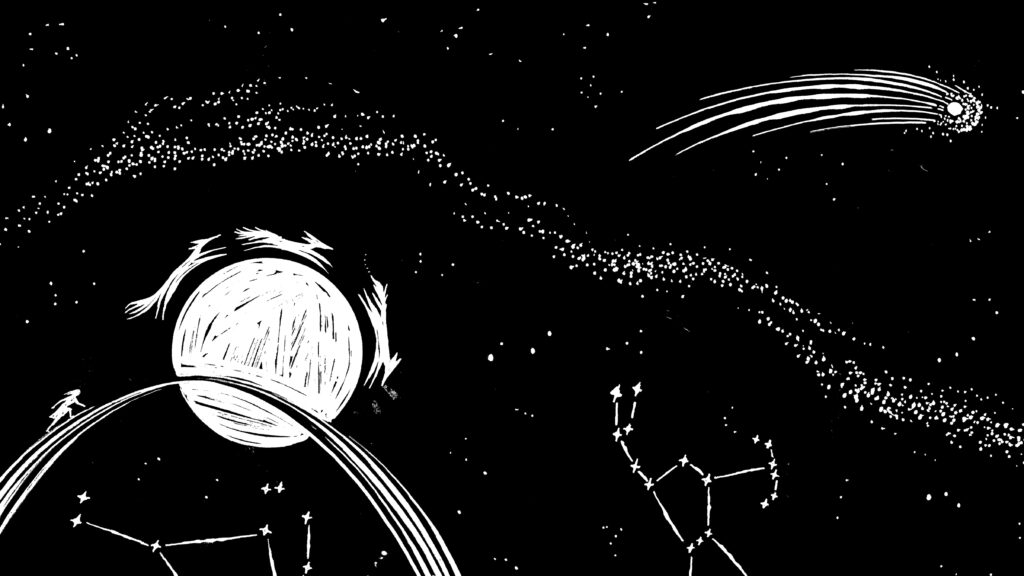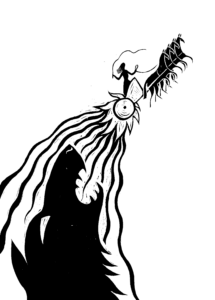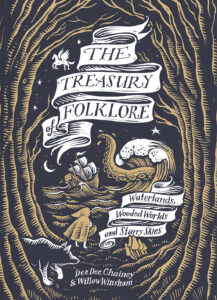Solar deities: Gods and goddesses of the sun

From Japan’s Amaterasu to the Lithuanian Saule, discover three magical solar deities that circle our universe in this glorious extract from The Treasury of Folklore: waterlands, wooded worlds and starry skies.
by Dee Dee Chainey and Willow Winsham
Amaterasu
Great Divinity Illuminating Heaven, Amaterasu or, to give the goddess her full name, Amaterasu-Omikami, is one of the most important deities in the Japanese Shinto pantheon. Goddess of the rising sun, she is inextricably linked with the Shinto state and imperial family.
Amaterasu is also closely linked with the introduction of rice to Japan. It is said that she sent Tsukiyomi, originally meant to rule the heavens with her, down to earth to watch Ukemochi, a food goddess, to see what she was doing. Unfortunately, when the goddess offered him rice, fish and game that she had vomited from her own mouth, Tsukiyomi grew offended and slew Ukemochi. Furious, Amaterasu refused to see her brother again, and the sun and the moon were never seen at the same time from that day. There was some benefit to come from Ukemochi’s death, however: when the body of the slain goddess was inspected, it was discovered that various things had sprung forth from it, including silkworms from her eyebrows, the horse and cow from her head, rice from her stomach, and beans and wheat from her genitals. These were brought back to heaven to Amaterasu, who took the rice and created the first holy rice fields in Heaven.
The emperors of Japan to this day claim descent from Amaterasu and as further evidence of her status, Amaterasu is worshipped at the most important Shinto shrine in Japan, the Ise Grand Shrine. Millions of visitors and pilgrims visit the shrine each year.
‘Goddess of the rising sun, she is inextricably linked with the Shinto state and imperial family.’
Saule
According to Latvian and Lithuanian tradition, Saule was the sun goddess and also the goddess of life and fertility. She married Menes, god of the moon, but unfortunately he didn’t remain faithful to her for long and, according to Lithuanian tradition, had an affair with Aušrinė, the goddess of the dawn. According to one version of the story, Perkūnas, the thunder god, avenged the slighted goddess, tearing the unfaithful moon god to pieces in punishment.
Saule is frequently associated with the colour red: overnight, she is said to don a garment of this colour, and thus rises red in the morning. She was also said to be wreathed in a garland of red flowers during the feast of Ligo, the major festival celebrating the summer solstice and honouring the goddess on 23 June. In many depictions, Saule wears national dress, in silver or gold silk, with a crown on her head, which she hangs on a tree in the evening. Saule is generally portrayed as a benevolent mother goddess, known for showing compassion and pity towards humankind.Saule is generally portrayed as a benevolent mother goddess, known for showing compassion and pity towards humankind.
‘Saule is generally portrayed as a benevolent mother goddess, known for showing compassion and pity towards humankind.’
Sól
Sól was the Germanic goddess of the sun, featuring heavily in Norse mythology relating to Ragnarok, the end of the world. Sól was fated to be chased through the sky by the wolf Sköll and, according to myth, a solar eclipse is caused when the wolf draws close enough to snap at her.
Sól’s brother Máni, the moon, is likewise chased by Hati, the wolves snapping at their horse-drawn chariots until they are finally caught, ushering in the end of the world. All is not lost, however, as it is foretold that before the end comes, Sól will give birth to a daughter – even more brilliant in beauty and brightness than herself – who will shine on in her mother’s stead in the new world.
Sól and Máni were originally children of Mundilfari, named after the sun and moon due to their exquisite beauty. But alas, the gods were deeply offended by such a display of arrogance and intervened, decreeing that Sól and her brother should be placed in the heavens themselves. They were charged with driving the two horses that drew the sun’s chariot – Arvakr and Alsvior, crossing the heavens each day to mark the passing of the days and years for humankind.Sól and Máni were originally children of Mundilfari, named after the sun and moon due to their exquisite beauty.
‘Sól and Máni were originally children of Mundilfari, named after the sun and moon due to their exquisite beauty.’

Find more on these deities along with further fascinating tales of folklore in The Treasury of folklore: waterlands, wooded worlds and starry skies, by Dee Dee Chainey and Willow Winsham, available to order here.
Enter our Instagram giveaway before Thursday 15 August to WIN a copy.
Illustrations by Joe McLaren.



